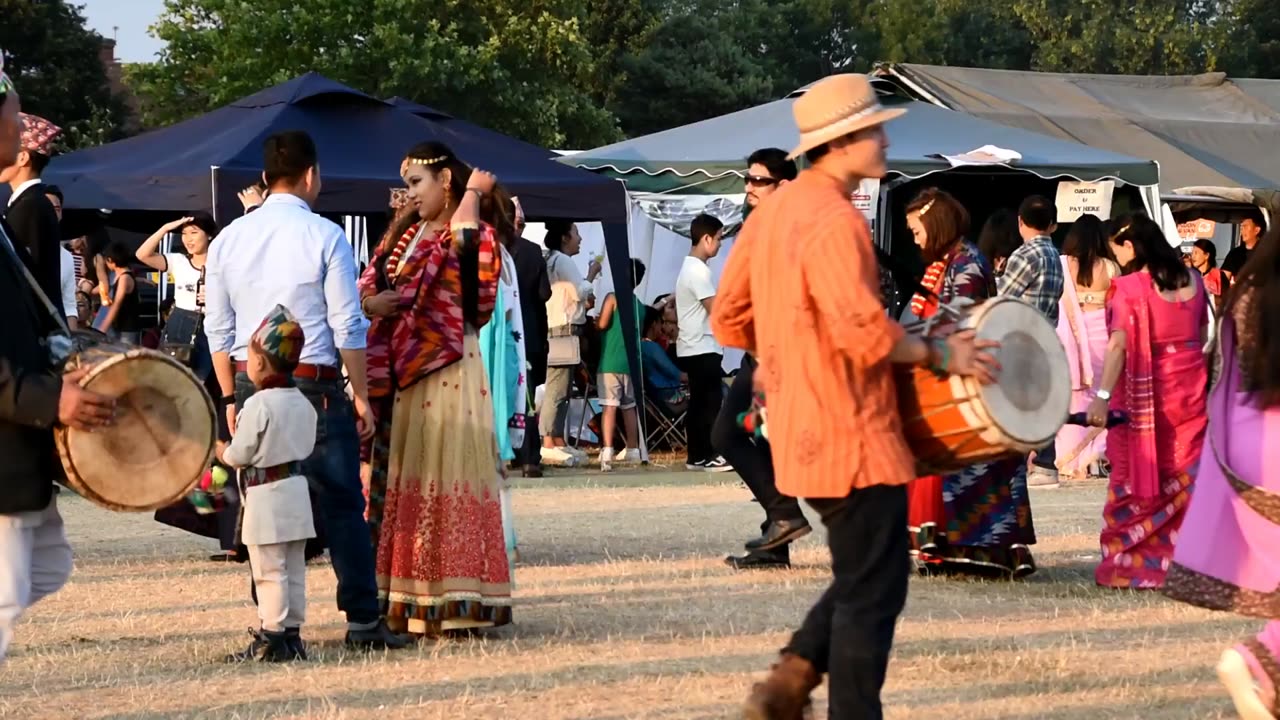Premium Only Content

When the Moon Sings Palam
“The Last Dance of Yalang”
In the emerald hills of eastern Nepal, nestled between misty forests and golden rice fields, lay the village of Tambar Khola—home to the proud Limbu people.
Every harvest season, after the rice had been cut and the granaries filled, the village came alive with music and dance. This was the time for Dhan Nach, or Yalang—the traditional rice dance. It wasn't just a celebration; it was a living memory of the Limbu ancestors, sung through ancient Palam songs.
This year, however, the festival carried a different mood.
Fourteen-year-old Mina had returned from the city for the first time in three years. Her parents had sent her to Kathmandu for schooling, far from the traditions of her village. She had grown used to headphones and mobile screens—but something stirred inside her when she saw the village preparing for Yalang.
Old Ama Lachi, the village singer, called out, “Mina, come join us tonight. Your grandmother was the best Palam singer in her time.”
Mina hesitated. She barely remembered the lyrics or the steps. “I don’t know the dance,” she said quietly.
That night, under a full moon, the villagers gathered in a circle on the open field. Boys and girls stood in lines, their hands linked, their feet moving in rhythm to the beat of the madal. The elder singers began the Palam—verses of love, wisdom, and playful teasing.
Something clicked.
Mina stepped forward. Slowly at first, then with growing confidence, she sang a line of Palam in response to a boy’s verse. The circle cheered. Her voice, though new, carried the echoes of her grandmother.
For the first time, she felt rooted—not just to the land, but to a living tradition.
As the dance continued through the night, Mina realized: Yalang was not just a dance. It was a story. A history. A heartbeat.
And she would never let it fade.
-
 2:00:48
2:00:48
The Charlie Kirk Show
7 hours agoTHOUGHTCRIME Ep. 97 — The Thoughtcrime WILL Continue
132K91 -
 35:08
35:08
Colion Noir
13 hours agoA Bear, an AR-15, and a Home Invasion
39.1K7 -
 3:05:55
3:05:55
TimcastIRL
9 hours agoJimmy Kimmel Refuses To Apologize Over Charlie Kirk Comments, Blames Gun Violence | Timcast IRL
200K174 -
 2:44:24
2:44:24
Laura Loomer
11 hours agoEP144: Trump Cracks Down On Radical Left Terror Cells
56.5K26 -
 4:47:56
4:47:56
Drew Hernandez
13 hours agoLEFTISTS UNITE TO DEFEND KIMMEL & ANTIFA TO BE DESIGNATED TERRORISTS BY TRUMP
51.7K23 -
 1:12:32
1:12:32
The Charlie Kirk Show
9 hours agoTPUSA AT CSU CANDLELIGHT VIGIL
109K62 -
 6:53:45
6:53:45
Akademiks
11 hours agoCardi B is Pregnant! WERE IS WHAM????? Charlie Kirk fallout. Bro did D4VID MURK A 16 YR OLD GIRL?
88.1K7 -
 2:26:15
2:26:15
Barry Cunningham
10 hours agoPRESIDENT TRUMP HAS 2 INTERVIEWS | AND MORE PROOF THE GAME HAS CHANGED!
149K96 -
 1:20:27
1:20:27
Glenn Greenwald
11 hours agoLee Fang Answers Your Questions on Charlie Kirk Assassination Fallout; Hate Speech Crackdowns, and More; Plus: "Why Superhuman AI Would Kill Us All" With Author Nate Soares | SYSTEM UPDATE #518
129K35 -
 1:03:06
1:03:06
BonginoReport
12 hours agoLyin’ Jimmy Kimmel Faces The Music - Nightly Scroll w/ Hayley Caronia (Ep.137)
177K70